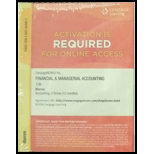
Concept explainers
(a)
Bad debt expense:
Bad debt expense is an expense account. The amounts of loss incurred from extending credit to the customers are recorded as bad debt expense. In other words, the estimated uncollectible accounts receivable are known as bad debt expense.
Direct write-off method:
This method does not make allowance or estimation for uncollectible accounts, instead this method directly write-off the actual uncollectible accounts by debiting bad debt expense and by crediting accounts receivable. Under this method, accounts would be written off only when the receivables from a customer remain uncollectible.
Allowance method:
It is a method for accounting bad debt expense, where amount of uncollectible accounts receivables are estimated and recorded at the end of particular period. Under this method,
Two methods to estimate uncollectible accounts under allowance method are:
- Percentage of sales method, and
- Analysis of receivables method.
Percentage of sales method:
Credit sales are recorded by debiting (increasing) accounts receivable account. The bad debts is a loss incurred out of credit sales, hence uncollectible accounts can be estimated as a percentage of credit sales or total sales.
It is a method of estimating the bad debts (expected loss on extending credit), by multiplying the expected percentage of uncollectible with the total amount of net credit sale (or total sales) for a specific period. Under percentage of sales method, estimated bad debts would be treated as a bad debt expense of the particular period.
Analysis of receivables method:
A method of determining the estimated uncollectible receivables based on the age of individual accounts receivable is known as analysis of receivables method. This method is otherwise known as aging of receivables method. Under analysis of receivables method, estimated bad debts would be treated as the desired adjusted balance for allowance for doubtful accounts.
To journalize: The write-offs for 2016under the direct write-off method.
(b)
To journalize: The write-offs for 2016 under allowance method (Analysis of receivables method).
(c)
Whether net income of S International is higher or lower under the direct-write off method than allowance method in 2016.
Want to see the full answer?
Check out a sample textbook solution
Chapter 8 Solutions
CengageNOWv2, 2 terms Printed Access Card for Warren?s Financial & Managerial Accounting, 13th, 13th Edition
- Please give me answer with general accountingarrow_forwardCan you please solve this questions? (Financial accounting )arrow_forwardFalcon Tech Co. manufactures and sells portable chargers. The company has annual fixed costs of $12,000,000. Each charger sells for $20 and incurs $11 in variable manufacturing costs. If the company’s total sales revenue last year was $45,000,000, how many chargers must Falcon Tech sell to achieve EBIT = 0?arrow_forward
 Cornerstones of Financial AccountingAccountingISBN:9781337690881Author:Jay Rich, Jeff JonesPublisher:Cengage Learning
Cornerstones of Financial AccountingAccountingISBN:9781337690881Author:Jay Rich, Jeff JonesPublisher:Cengage Learning College Accounting (Book Only): A Career ApproachAccountingISBN:9781337280570Author:Scott, Cathy J.Publisher:South-Western College Pub
College Accounting (Book Only): A Career ApproachAccountingISBN:9781337280570Author:Scott, Cathy J.Publisher:South-Western College Pub Financial And Managerial AccountingAccountingISBN:9781337902663Author:WARREN, Carl S.Publisher:Cengage Learning,
Financial And Managerial AccountingAccountingISBN:9781337902663Author:WARREN, Carl S.Publisher:Cengage Learning, Financial Accounting: The Impact on Decision Make...AccountingISBN:9781305654174Author:Gary A. Porter, Curtis L. NortonPublisher:Cengage LearningPrinciples of Accounting Volume 1AccountingISBN:9781947172685Author:OpenStaxPublisher:OpenStax College
Financial Accounting: The Impact on Decision Make...AccountingISBN:9781305654174Author:Gary A. Porter, Curtis L. NortonPublisher:Cengage LearningPrinciples of Accounting Volume 1AccountingISBN:9781947172685Author:OpenStaxPublisher:OpenStax College





